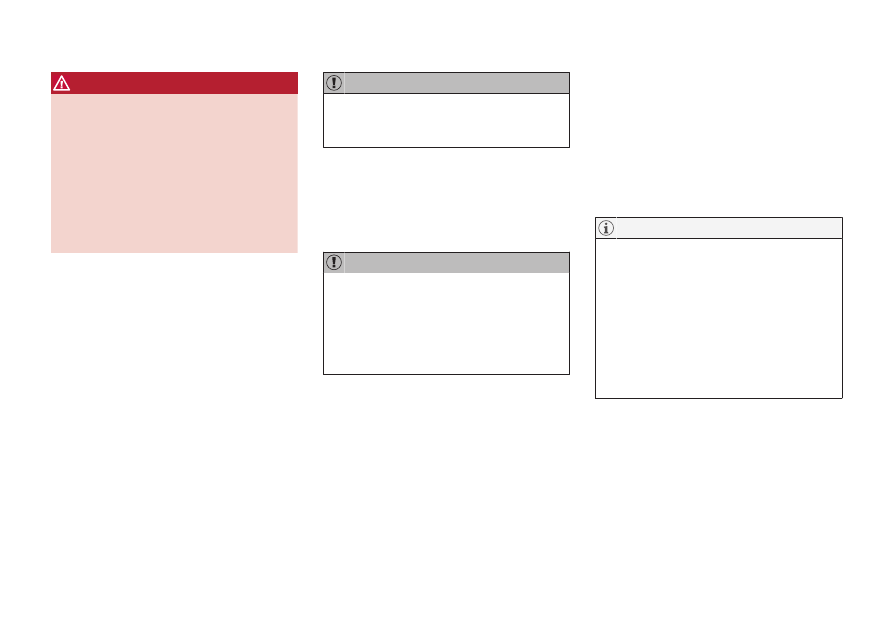Volvo V60 Cross Country (2018 year). Manual - part 20

WHEELS AND TIRES
* Option/accessory.
330
WARNING
•
The vehicle’s engine should be running
when the tire sealing system is used to
avoid battery drain. Therefore, be sure the
vehicle is parked in a well ventilated place,
or outdoors, before using the system. The
parking brake should be securely applied
and the gear selector should be in the P
(park) position.
•
Children should never be left unattended
in the vehicle when the engine is running.
7. Check the tire’s inflation pressure on the
gauge. Switch off the compressor briefly to
get a clear reading from the pressure gauge.
8. Refer to the tire inflation table in this chapter
for the correct inflation pressure. If the tire
needs to be inflated, start the tire sealing
system’s compressor (press the on/off
switch to position I). If necessary, release air
from the tire by turning the air release knob
counterclockwise.
The compressor should not be used for more
than 10 minutes at a time to avoid overheat-
ing.
9. Turn off the compressor (press the on/off
switch to position 0) when the correct infla-
tion pressure has been reached.
10. Unscrew the hose from the tire’s inflation
valve and reinstall the valve cap.
•
After inflating the tires, always reinstall the
valve cap to help avoid damage to the
valve from dirt, gravel, etc.
•
Use plastic valve caps only. Metal caps
could corrode and become difficult to
remove.
11. Disconnect the electrical wire from the
12-volt socket.
Tire sealing system* – sealing
compound container
The sealing compound container must be
replaced if the tire sealing system has been
used to repair a tire or if the container’s expira-
tion date has passed (see the date on decal).
Replacing the sealing compound
container
•
After use, the sealing compound bottle,
the hose, and certain other system com-
ponents must be replaced. Please con-
sult your Volvo retailer for replacement
parts.
•
If the sealing compound bottle’s expira-
tion date has passed, please take it to a
Volvo retailer or a recycling station that
can properly dispose of harmful sub-
stances.